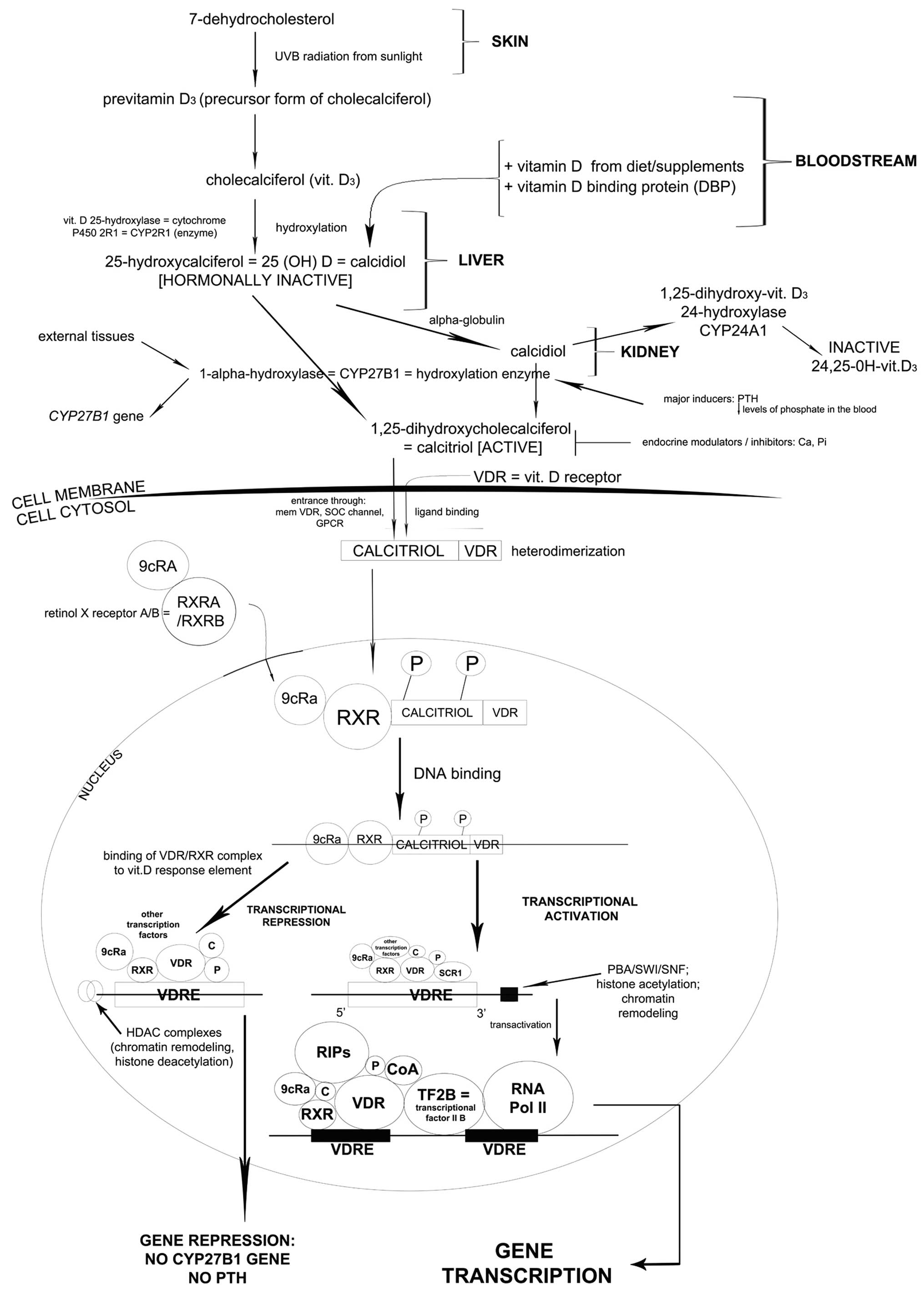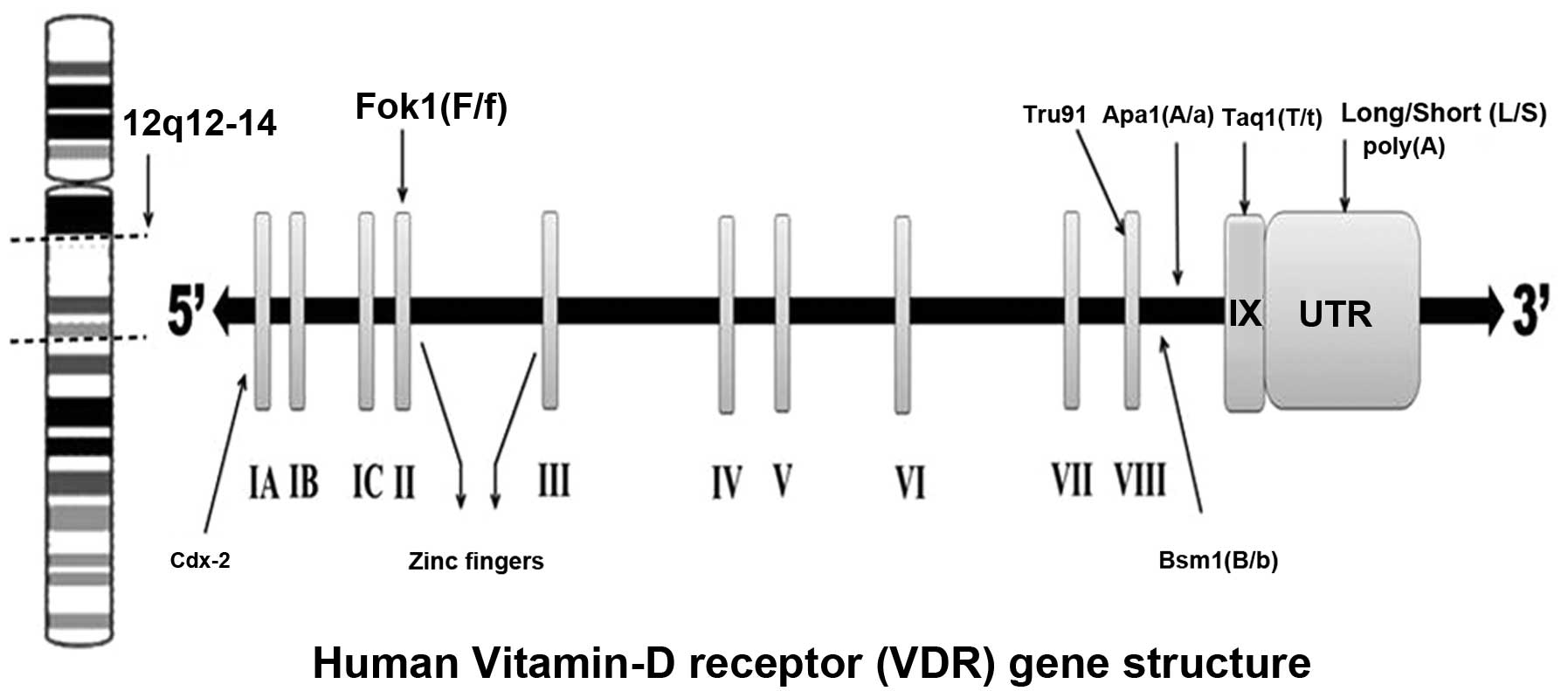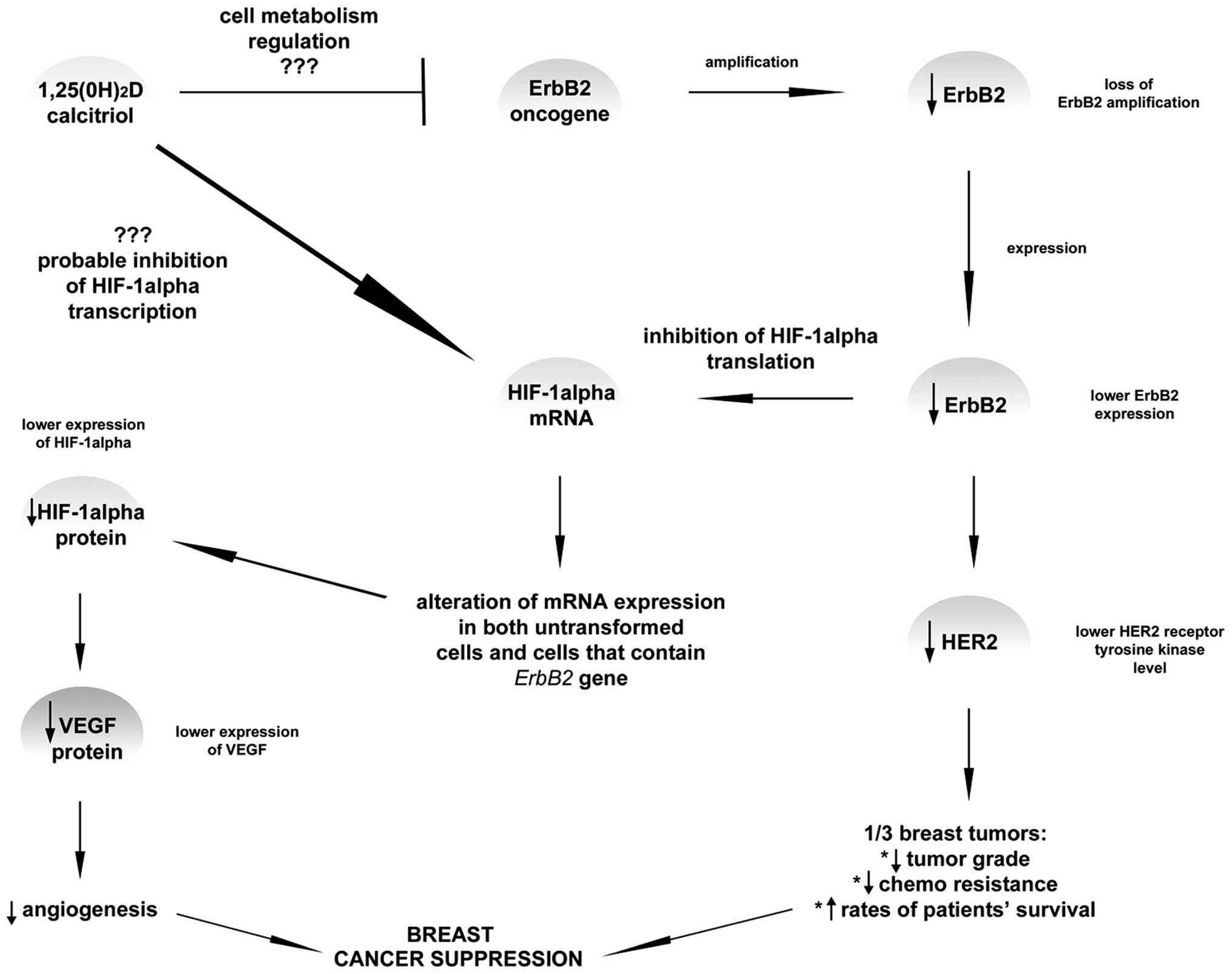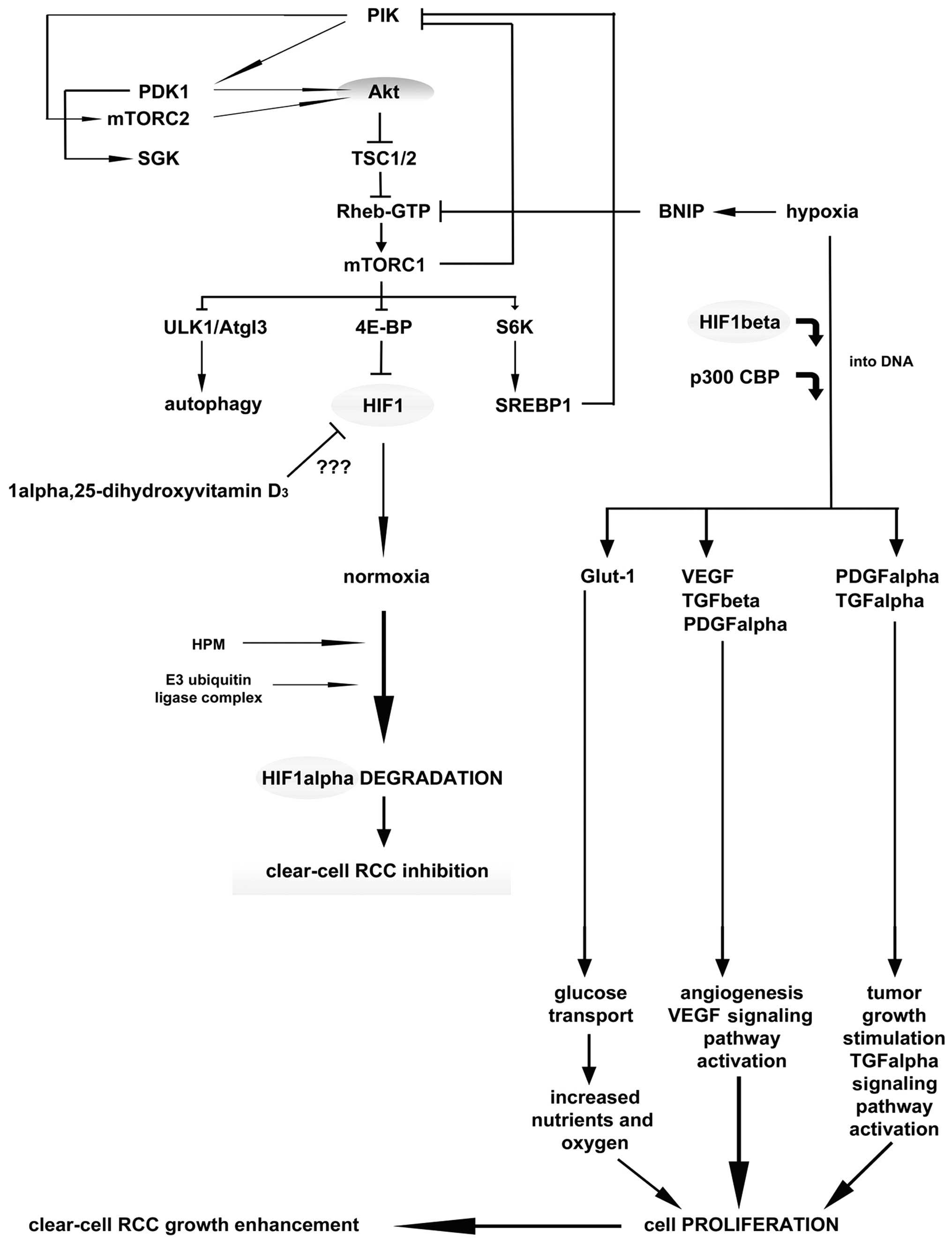|
1.
|
Ferlay J, Shin HR, Bray F, Forman D,
Mathers C and Parkin DM: Estimates of worldwide burden of cancer in
2008: GLOBOCAN 2008. Int J Cancer. 127:2893–2917. 2010. View Article : Google Scholar : PubMed/NCBI
|
|
2.
|
Pharoah PDP and Mackay J: Absolute risk of
breast cancer in women at increased risk: a more useful clinical
measure than relative risk? Breast. 7:255–259. 1998. View Article : Google Scholar
|
|
3.
|
Czarnecka AM, Klemba A, Krawczyk T, et al:
Mitochondrial NADH-dehydrogenase polymorphisms as sporadic breast
cancer risk factor. Oncol Rep. 23:531–535. 2010.PubMed/NCBI
|
|
4.
|
Najm MZ, Zaidi S, Siddiqui WA and Husain
SA: Immunohistochemical expression and mutation study of Prohibitin
gene in Indian female breast cancer cases. Med Oncol. 30:6142013.
View Article : Google Scholar : PubMed/NCBI
|
|
5.
|
Porta C, Bellmunt J, Eisen T, Szczylik C
and Mulders P: Treating the individual: The need for a
patient-focused approach to the management of renal cell carcinoma.
Cancer Treat Rev. 36:16–23. 2010. View Article : Google Scholar : PubMed/NCBI
|
|
6.
|
Hung RJ, Moore L, Boffetta P, et al:
Family history and the risk of kidney cancer: a multicenter
case-control study in Central Europe. Cancer Epidemiol Biomarkers
Prev. 16:1287–1290. 2007. View Article : Google Scholar : PubMed/NCBI
|
|
7.
|
Chow WH, Dong LM and Devesa SS:
Epidemiology and risk factors for kidney cancer. Nat Rev Urol.
7:245–257. 2010. View Article : Google Scholar : PubMed/NCBI
|
|
8.
|
Krishnan AV, Trump DL, Johnson CS and
Feldman D: The role of vitamin D in cancer prevention and
treatment. Endocrinol Metab Clin North Am. 39:401–418. 2010.
View Article : Google Scholar : PubMed/NCBI
|
|
9.
|
Ali MM and Vaidya V: Vitamin D and cancer.
J Cancer Res Ther. 3:225–230. 2007. View Article : Google Scholar
|
|
10.
|
Simboli-Campbell M, Narvaez CJ, Tenniswood
M and Welsh J: 1,25-dihydroxyvitamin D-3 induces morphological and
biochemical markers of apoptosis in MCF-7 breast cancer cells. J
Steroid Biochem Mol Biol. 58:367–376. 1996. View Article : Google Scholar
|
|
11.
|
Thibault F, Cancel-Tassin G and Cussenot
O: Low penetrance genetic susceptibility to kidney cancer. BJU Int.
98:735–738. 2006. View Article : Google Scholar : PubMed/NCBI
|
|
12.
|
Lowe LC, Guy M, Mansi JL, et al: Plasma
25-hydroxy vitamin D concentrations, vitamin D receptor genotype
and breast cancer risk in a UK Caucasian population. Eur J Cancer.
41:1164–1169. 2005. View Article : Google Scholar : PubMed/NCBI
|
|
13.
|
Bhattacharjee M, Wientroub S and
Vonderhaar BK: Milk protein synthesis by mammary glands of vitamin
D-deficient mice. Endocrinology. 121:865–874. 1987. View Article : Google Scholar : PubMed/NCBI
|
|
14.
|
Chouvet C, Vicard E, Devonec M and Saez S:
1,25-Dihydroxyvitamin D3 inhibitory effect on the growth of two
human breast cancer cell lines (MCF-7, BT-20). J Steroid Biochem.
24:373–376. 1986. View Article : Google Scholar : PubMed/NCBI
|
|
15.
|
Eisman JA, Sutherland RL, McMenemy ML,
Fragonas JC, Musgrove EA and Pang GY: Effects of
1,25-dihydroxyvitamin D3 on cell-cycle kinetics of T 47D human
breast cancer cells. J Cell Physiol. 138:611–616. 1989. View Article : Google Scholar : PubMed/NCBI
|
|
16.
|
James SY, Mackay AG and Colston KW:
Vitamin D derivatives in combination with 9-cis retinoic acid
promote active cell death in breast cancer cells. J Mol Endocrinol.
14:391–394. 1995. View Article : Google Scholar : PubMed/NCBI
|
|
17.
|
Welsh J, Wietzke JA, Zinser GM, et al:
Impact of the Vitamin D3 receptor on growth-regulatory pathways in
mammary gland and breast cancer. J Steroid Biochem Mol Biol.
83:85–92. 2002. View Article : Google Scholar : PubMed/NCBI
|
|
18.
|
Sergeev IN: Vitamin D and cellular
Ca2+ signaling in breast cancer. Anticancer Res.
32:299–302. 2012.PubMed/NCBI
|
|
19.
|
Freedman DM, Looker AC, Chang SC and
Graubard BI: Prospective study of serum vitamin D and cancer
mortality in the United States. J Natl Cancer Inst. 99:1594–1602.
2007. View Article : Google Scholar : PubMed/NCBI
|
|
20.
|
John EM, Schwartz GG, Koo J, Wang W and
Ingles SA: Sun exposure, vitamin D receptor gene polymorphisms, and
breast cancer risk in a multiethnic population. Am J Epidemiol.
166:1409–1419. 2007. View Article : Google Scholar : PubMed/NCBI
|
|
21.
|
Shao T, Klein P and Grossbard ML: Vitamin
D and breast cancer. Oncologist. 17:36–45. 2012. View Article : Google Scholar : PubMed/NCBI
|
|
22.
|
Friedman PA and Gesek FA: Cellular calcium
transport in renal epithelia: measurement, mechanisms, and
regulation. Physiol Rev. 75:429–471. 1995.PubMed/NCBI
|
|
23.
|
Kumar R: Calcium transport in epithelial
cells of the intestine and kidney. J Cell Biochem. 57:392–398.
1995. View Article : Google Scholar : PubMed/NCBI
|
|
24.
|
Gray R, Boyle I and DeLuca HF: Vitamin D
metabolism: the role of kidney tissue. Science. 172:1232–1234.
1971. View Article : Google Scholar : PubMed/NCBI
|
|
25.
|
Tanaka Y and DeLuca HF: Rat renal
25-hydroxyvitamin D3 1- and 24-hydroxylases: their in vivo
regulation. Am J Physiol. 246:E168–E173. 1984.PubMed/NCBI
|
|
26.
|
Johnson JA, Grande JP, Roche PC, Sweeney
WE Jr, Avner ED and Kumar R: 1 alpha, 25-dihydroxyvitamin D3
receptor onto-genesis in fetal renal development. Am J Physiol.
269:F419–F428. 1995.PubMed/NCBI
|
|
27.
|
Wilson RT, Wang J, Chinchilli V, et al:
Fish, vitamin D, and flavonoids in relation to renal cell cancer
among smokers. Am J Epidemiol. 170:717–729. 2009. View Article : Google Scholar : PubMed/NCBI
|
|
28.
|
Okamoto T, Fujioka T and Horiuchi S: A
study of the metabolism of vitamin D in patients with renal cell
carcinoma - with special reference to serum concentration of 1
alpha, 25-(OH)2D and its clinical significance. Nihon Hinyokika
Gakkai Zasshi. 82:890–899. 1991.(In Japanese).
|
|
29.
|
Fujioka T, Suzuki Y, Okamoto T, Mastushita
N, Hasegawa M and Omori S: Prevention of renal cell carcinoma by
active vitamin D3. World J Surg. 24:1205–1210. 2000. View Article : Google Scholar : PubMed/NCBI
|
|
30.
|
Norman AW: Minireview: vitamin D receptor:
new assignments for an already busy receptor. Endocrinology.
147:5542–5548. 2006. View Article : Google Scholar : PubMed/NCBI
|
|
31.
|
Zhou H, Xu C and Gu M: Vitamin D receptor
(VDR) gene polymorphisms and Graves’ disease: a meta-analysis. Clin
Endocrinol (Oxf). 70:938–945. 2009.
|
|
32.
|
Zmuda JM, Cauley JA and Ferrell RE:
Molecular epidemiology of vitamin D receptor gene variants.
Epidemiol Rev. 22:203–217. 2000. View Article : Google Scholar : PubMed/NCBI
|
|
33.
|
Tokita A, Matsumoto H, Morrison NA, et al:
Vitamin D receptor alleles, bone mineral density and turnover in
premenopausal Japanese women. J Bone Miner Res. 11:1003–1009. 1996.
View Article : Google Scholar : PubMed/NCBI
|
|
34.
|
Abbas S, Nieters A, Linseisen J, et al:
Vitamin D receptor gene polymorphisms and haplotypes and
postmenopausal breast cancer risk. Breast Cancer Res. 10:P312008.
View Article : Google Scholar : PubMed/NCBI
|
|
35.
|
Uitterlinden AG, Fang Y, Van Meurs JB,
Pols HA and Van Leeuwen JP: Genetics and biology of vitamin D
receptor polymorphisms. Gene. 338:143–156. 2004. View Article : Google Scholar : PubMed/NCBI
|
|
36.
|
Obara W, Suzuki Y, Kato K, Tanji S, Konda
R and Fujioka T: Vitamin D receptor gene polymorphisms are
associated with increased risk and progression of renal cell
carcinoma in a Japanese population. Int J Urol. 14:483–487. 2007.
View Article : Google Scholar : PubMed/NCBI
|
|
37.
|
Gross C, Eccleshall TR, Malloy PJ, Villa
ML, Marcus R and Feldman D: The presence of a polymorphism at the
translation initiation site of the vitamin D receptor gene is
associated with low bone mineral density in postmenopausal
Mexican-American women. J Bone Miner Res. 11:1850–1855. 1996.
View Article : Google Scholar : PubMed/NCBI
|
|
38.
|
Morrison NA, Yeoman R, Kelly PJ and Eisman
JA: Contribution of trans-acting factor alleles to normal
physiological variability: vitamin D receptor gene polymorphism and
circulating osteocalcin. Proc Natl Acad Sci USA. 89:6665–6669.
1992. View Article : Google Scholar
|
|
39.
|
Faraco JH, Morrison NA, Baker A, Shine J
and Frossard PM: ApaI dimorphism at the human vitamin D receptor
gene locus. Nucleic Acids Res. 17:21501989. View Article : Google Scholar : PubMed/NCBI
|
|
40.
|
Arai H, Miyamoto KI, Yoshida M, et al: The
polymorphism in the caudal-related homeodomain protein Cdx-2
binding element in the human vitamin D receptor gene. J Bone Miner
Res. 16:1256–1264. 2001. View Article : Google Scholar : PubMed/NCBI
|
|
41.
|
Morrison NA, Qi JC, Tokita A, et al:
Prediction of bone density from vitamin D receptor alleles. Nature.
367:284–287. 1994. View Article : Google Scholar : PubMed/NCBI
|
|
42.
|
Gong YL, Xie DW, Deng ZL, et al: Vitamin D
receptor gene Tru9I polymorphism and risk for incidental sporadic
colorectal adenomas. World J Gastroenterol. 11:4794–4799.
2005.PubMed/NCBI
|
|
43.
|
Ingles SA, Ross RK, Yu MC, et al:
Association of prostate cancer risk with genetic polymorphisms in
vitamin D receptor and androgen receptor. J Natl Cancer Inst.
89:166–170. 1997. View Article : Google Scholar : PubMed/NCBI
|
|
44.
|
Arai H, Miyamoto K, Taketani Y, et al: A
vitamin D receptor gene polymorphism in the translation initiation
codon: effect on protein activity and relation to bone mineral
density in Japanese women. J Bone Miner Res. 12:915–921. 1997.
View Article : Google Scholar : PubMed/NCBI
|
|
45.
|
Jurutka PW, Remus LS, Whitfield GK, et al:
The polymorphic N terminus in human vitamin D receptor isoforms
influences transcriptional activity by modulating interaction with
transcription factor IIB. Mol Endocrinol. 14:401–420. 2000.
View Article : Google Scholar : PubMed/NCBI
|
|
46.
|
Slattery ML: Vitamin D receptor gene (VDR)
associations with cancer. Nutr Rev. 65:S102–S104. 2007. View Article : Google Scholar : PubMed/NCBI
|
|
47.
|
Sweeney C, Curtin K, Murtaugh MA, Caan BJ,
Potter JD and Slattery ML: Haplotype analysis of common vitamin D
receptor variants and colon and rectal cancers. Cancer Epidemiol
Biomarkers Prev. 15:744–749. 2006. View Article : Google Scholar : PubMed/NCBI
|
|
48.
|
Fang Y, van Meurs JB, d’Alesio A, et al:
Promoter and 3’-untranslated-region haplotypes in the vitamin D
receptor gene predispose to osteoporotic fracture: the rotterdam
study. Am J Hum Genet. 77:807–823. 2005.
|
|
49.
|
Saijo T, Ito M, Takeda E, et al: A unique
mutation in the vitamin D receptor gene in three Japanese patients
with vitamin D-dependent rickets type II: utility of single-strand
conformation polymorphism analysis for heterozygous carrier
detection. Am J Hum Genet. 49:668–673. 1991.
|
|
50.
|
Hustmyer FG, DeLuca HF and Peacock M:
ApaI, BsmI, EcoRV and TaqI polymorphisms at the human vitamin D
receptor gene locus in Caucasians, blacks and Asians. Hum Mol
Genet. 2:4871993. View Article : Google Scholar : PubMed/NCBI
|
|
51.
|
Bhanushali AA, Lajpal N, Kulkarni SS,
Chavan SS, Bagadi SS and Das BR: Frequency of fokI and taqI
polymorphism of vitamin D receptor gene in Indian population and
its association with 25-hydroxyvitamin D levels. Indian J Hum
Genet. 15:108–113. 2009. View Article : Google Scholar : PubMed/NCBI
|
|
52.
|
Kostner K, Denzer N, Müller CS, Klein R,
Tilgen W and Reichrath J: The relevance of vitamin D receptor (VDR)
gene polymorphisms for cancer: a review of the literature.
Anticancer Res. 29:3511–3536. 2009.PubMed/NCBI
|
|
53.
|
Yamamoto H, Miyamoto K, Li B, et al: The
caudal-related homeodomain protein Cdx-2 regulates vitamin D
receptor gene expression in the small intestine. J Bone Miner Res.
14:240–247. 1999. View Article : Google Scholar : PubMed/NCBI
|
|
54.
|
Fang Y, van Meurs JB, Bergink AP, et al:
Cdx-2 polymorphism in the promoter region of the human vitamin D
receptor gene determines susceptibility to fracture in the elderly.
J Bone Miner Res. 18:1632–1641. 2003. View Article : Google Scholar : PubMed/NCBI
|
|
55.
|
Halsall JA, Osborne JE, Potter L, Pringle
JH and Hutchinson PE: A novel polymorphism in the 1A promoter
region of the vitamin D receptor is associated with altered
susceptibilty and prognosis in malignant melanoma. Br J Cancer.
91:765–770. 2004.PubMed/NCBI
|
|
56.
|
Welsh J: Vitamin D and prevention of
breast cancer. Acta Pharmacol Sin. 28:1373–1382. 2007. View Article : Google Scholar : PubMed/NCBI
|
|
57.
|
James SY, Mackay AG, Binderup L and
Colston KW: Effects of a new synthetic vitamin D analogue, EB1089,
on the oestrogen-responsive growth of human breast cancer cells. J
Endocrinol. 141:555–563. 1994. View Article : Google Scholar : PubMed/NCBI
|
|
58.
|
Swami S, Krishnan AV and Feldman D:
1alpha,25-Dihydroxyvitamin D3 down-regulates estrogen receptor
abundance and suppresses estrogen actions in MCF-7 human breast
cancer cells. Clin Cancer Res. 6:3371–3379. 2000.PubMed/NCBI
|
|
59.
|
Welsh J: Vitamin D and breast cancer:
insights from animal models. Am J Clin Nutr. 80(Suppl 6):
1721S–1724S. 2004.PubMed/NCBI
|
|
60.
|
Chlebowski RT, Johnson KC, Kooperberg C,
et al: Calcium plus vitamin D supplementation and the risk of
breast cancer. J Natl Cancer Inst. 100:1581–1591. 2008. View Article : Google Scholar : PubMed/NCBI
|
|
61.
|
Fraser DR and Kodicek E: Unique
biosynthesis by kidney of a biological active vitamin D metabolite.
Nature. 228:764–766. 1970. View Article : Google Scholar : PubMed/NCBI
|
|
62.
|
Bosetti C, Scotti L, Maso LD, et al:
Micronutrients and the risk of renal cell cancer: a case-control
study from Italy. Int J Cancer. 120:892–896. 2007. View Article : Google Scholar : PubMed/NCBI
|
|
63.
|
Karami S, Brennan P, Navratilova M, et al:
Vitamin D pathway genes, diet, and risk of renal cell carcinoma.
Int J Endocrinol. 2010:8793622010. View Article : Google Scholar : PubMed/NCBI
|
|
64.
|
Raimondi S, Johansson H, Maisonneuve P and
Gandini S: Review and meta-analysis on vitamin D receptor
polymorphisms and cancer risk. Carcinogenesis. 30:1170–1180. 2009.
View Article : Google Scholar : PubMed/NCBI
|
|
65.
|
Trump DL, Hershberger PA, Bernardi RJ, et
al: Anti-tumor activity of calcitriol: pre-clinical and clinical
studies. J Steroid Biochem Mol Biol. 89–90:519–526. 2004.PubMed/NCBI
|
|
66.
|
Ordonez-Moran P, Larriba MJ, Pendas-Franco
N, Aguilera O, Gonzalez-Sancho JM and Munoz A: Vitamin D and
cancer: an update of in vitro and in vivo data. Front Biosci.
10:2723–2749. 2005. View
Article : Google Scholar : PubMed/NCBI
|
|
67.
|
Bretherton-Watt D, Given-Wilson R, Mansi
JL, Thomas V, Carter N and Colston KW: Vitamin D receptor gene
polymorphisms are associated with breast cancer risk in a UK
Caucasian population. Br J Cancer. 85:171–175. 2001. View Article : Google Scholar : PubMed/NCBI
|
|
68.
|
Guy M, Lowe LC, Bretherton-Watt D, et al:
Vitamin D receptor gene polymorphisms and breast cancer risk. Clin
Cancer Res. 10:5472–5481. 2004. View Article : Google Scholar : PubMed/NCBI
|
|
69.
|
Ingles SA, Garcia DG, Wang W, et al:
Vitamin D receptor genotype and breast cancer in Latinas (United
States). Cancer Causes Control. 11:25–30. 2000. View Article : Google Scholar : PubMed/NCBI
|
|
70.
|
Dorjgochoo T, Delahanty R, Lu W, et al:
Common genetic variants in the vitamin D pathway including
genome-wide associated variants are not associated with breast
cancer risk among Chinese women. Cancer Epidemiol Biomarkers Prev.
20:2313–2316. 2011. View Article : Google Scholar : PubMed/NCBI
|
|
71.
|
McCullough ML, Stevens VL, Diver WR, et
al: Vitamin D pathway gene polymorphisms, diet, and risk of
postmenopausal breast cancer: a nested case-control study. Breast
Cancer Res. 9:R92007. View Article : Google Scholar : PubMed/NCBI
|
|
72.
|
Curran JE, Vaughan T, Lea RA, Weinstein
SR, Morrison NA and Griffiths LR: Association of A vitamin D
receptor polymorphism with sporadic breast cancer development. Int
J Cancer. 83:723–726. 1999. View Article : Google Scholar : PubMed/NCBI
|
|
73.
|
Chen WY, Bertone-Johnson ER, Hunter DJ,
Willett WC and Hankinson SE: Associations between polymorphisms in
the vitamin D receptor and breast cancer risk. Cancer Epidemiol
Biomarkers Prev. 14:2335–2339. 2005. View Article : Google Scholar : PubMed/NCBI
|
|
74.
|
Tang C, Chen N, Wu M, Yuan H and Du Y:
Fok1 polymorphism of vitamin D receptor gene contributes to breast
cancer susceptibility: a meta-analysis. Breast Cancer Res Treat.
117:391–399. 2009. View Article : Google Scholar : PubMed/NCBI
|
|
75.
|
Karami S, Brennan P, Hung RJ, et al:
Vitamin D receptor polymorphisms and renal cancer risk in Central
and Eastern Europe. J Toxicol Environ Health A. 71:367–372. 2008.
View Article : Google Scholar : PubMed/NCBI
|
|
76.
|
Arjumand W, Ahmad ST, Seth A, Saini AK and
Sultana S: Vitamin D receptor FokI and BsmI gene polymorphism and
its association with grade and stage of renal cell carcinoma in
North Indian population. Tumour Biol. 33:23–31. 2012. View Article : Google Scholar : PubMed/NCBI
|
|
77.
|
Guy M, Lowe LC, Bretherton-Watt D, Mansi
JL and Colston KW: Approaches to evaluating the association of
vitamin D receptor gene polymorphisms with breast cancer risk.
Recent Results Cancer Res. 164:43–54. 2003. View Article : Google Scholar : PubMed/NCBI
|
|
78.
|
Trabert B, Malone KE, Daling JR, et al:
Vitamin D receptor polymorphisms and breast cancer risk in a large
population-based case-control study of Caucasian and
African-American women. Breast Cancer Res. 9:R842007. View Article : Google Scholar : PubMed/NCBI
|
|
79.
|
Ruggiero M, Pacini S, Aterini S, Fallai C,
Ruggiero C and Pacini P: Vitamin D receptor gene polymorphism is
associated with metastatic breast cancer. Oncol Res. 10:43–46.
1998.PubMed/NCBI
|
|
80.
|
Hou MF, Tien YC, Lin GT, et al:
Association of vitamin D receptor gene polymorphism with sporadic
breast cancer in Taiwanese patients. Breast Cancer Res Treat.
74:1–7. 2002. View Article : Google Scholar : PubMed/NCBI
|
|
81.
|
Sinotte M, Rousseau F, Ayotte P, et al:
Vitamin D receptor polymorphisms (FokI, BsmI) and breast cancer
risk: association replication in two case-control studies within
French Canadian population. Endocr Relat Cancer. 15:975–983. 2008.
View Article : Google Scholar : PubMed/NCBI
|
|
82.
|
Buyru N, Tezol A, Yosunkaya-Fenerci E and
Dalay N: Vitamin D receptor gene polymorphisms in breast cancer.
Exp Mol Med. 35:550–555. 2003. View Article : Google Scholar : PubMed/NCBI
|
|
83.
|
Dunning AM, McBride S, Gregory J, et al:
No association between androgen or vitamin D receptor gene
polymorphisms and risk of breast cancer. Carcinogenesis.
20:2131–2135. 1999. View Article : Google Scholar : PubMed/NCBI
|
|
84.
|
Chakraborty A, Mishra AK, Soni A, et al:
Vitamin D receptor gene polymorphism(s) and breast cancer risk in
north Indians. Cancer Detect Prev. 32:386–394. 2009. View Article : Google Scholar : PubMed/NCBI
|
|
85.
|
Sillanpää P, Hirvonen A, Kataja V, et al:
Vitamin D receptor gene polymorphism as an important modifier of
positive family history related breast cancer risk.
Pharmacogenetics. 14:239–245. 2004.PubMed/NCBI
|
|
86.
|
Lundin AC, Söderkvist P, Eriksson B,
Bergman-Jungeström M and Wingren S: Association of breast cancer
progression with a vitamin D receptor gene polymorphism. South-East
Sweden Breast Cancer Group. Cancer Res. 59:2332–2334.
1999.PubMed/NCBI
|
|
87.
|
Ikuyama T, Hamasaki T, Inatomi H, Katoh T,
Muratani T and Matsumoto T: Association of vitamin D receptor gene
polymorphism with renal cell carcinoma in Japanese. Endocr J.
49:433–438. 2002. View Article : Google Scholar : PubMed/NCBI
|
|
88.
|
Wedrén S, Magnusson C, Humphreys K, et al:
Associations between androgen and Vitamin D receptor
microsatellites and postmenopausal breast cancer. Cancer Epidemiol
Biomarkers Prev. 16:1775–1783. 2007.PubMed/NCBI
|
|
89.
|
Protzel C, Maruschke M and Hakenberg OW:
Epidemiology, aetiology, and pathogenesis of renal cell carcinoma.
Eur Urol (Suppl). 11:52–59. 2012. View Article : Google Scholar
|
|
90.
|
American Cancer Society. Breast Cancer
Facts and Figures 2009–2010. American Cancer Society; Atlanta, GA:
2010
|


















